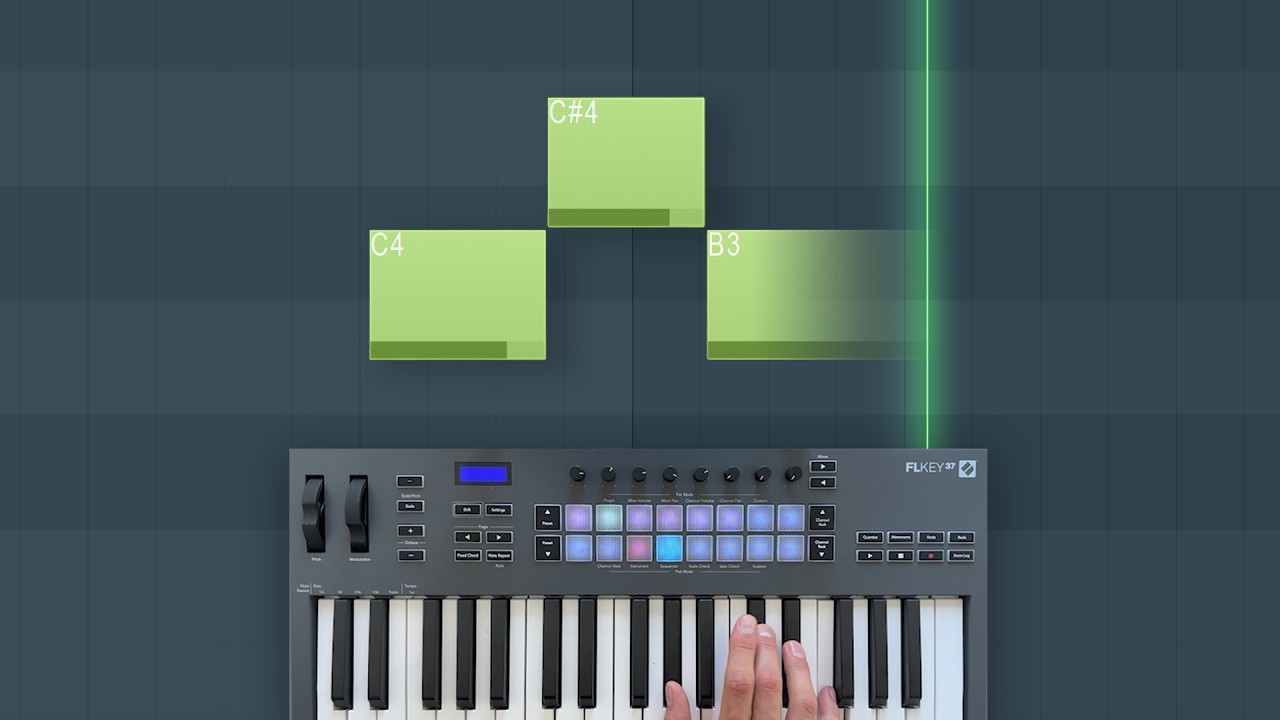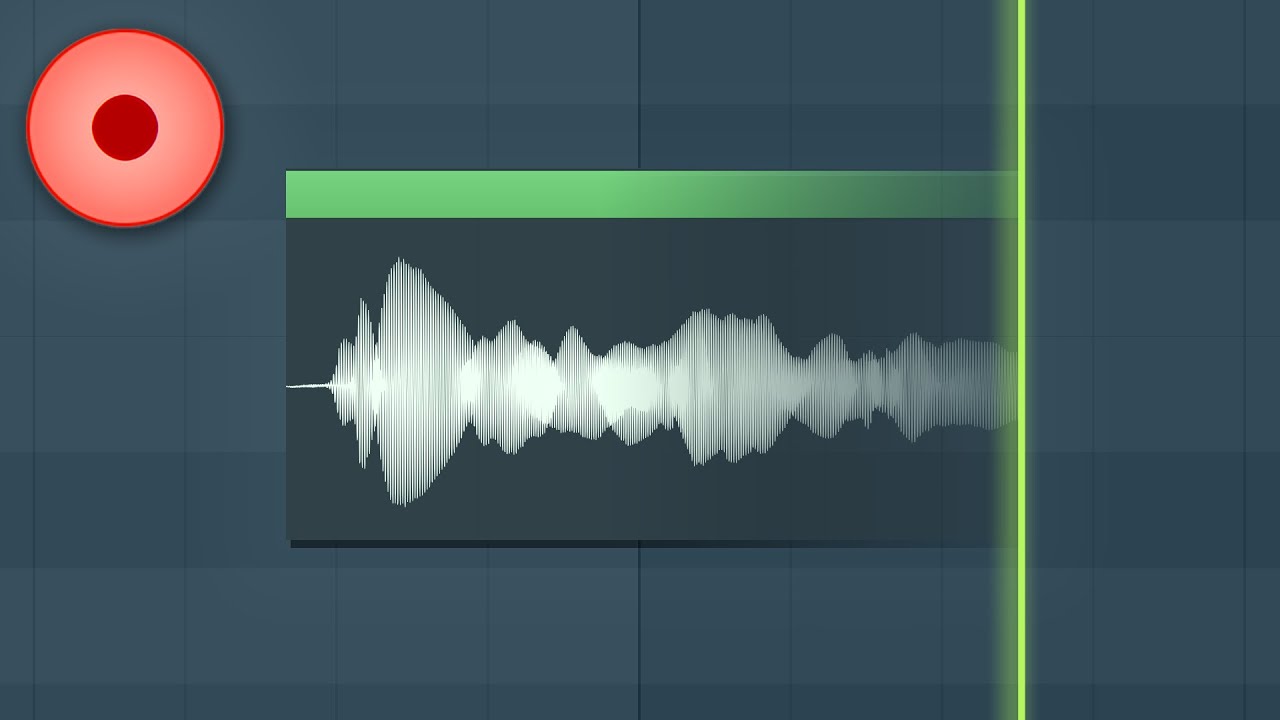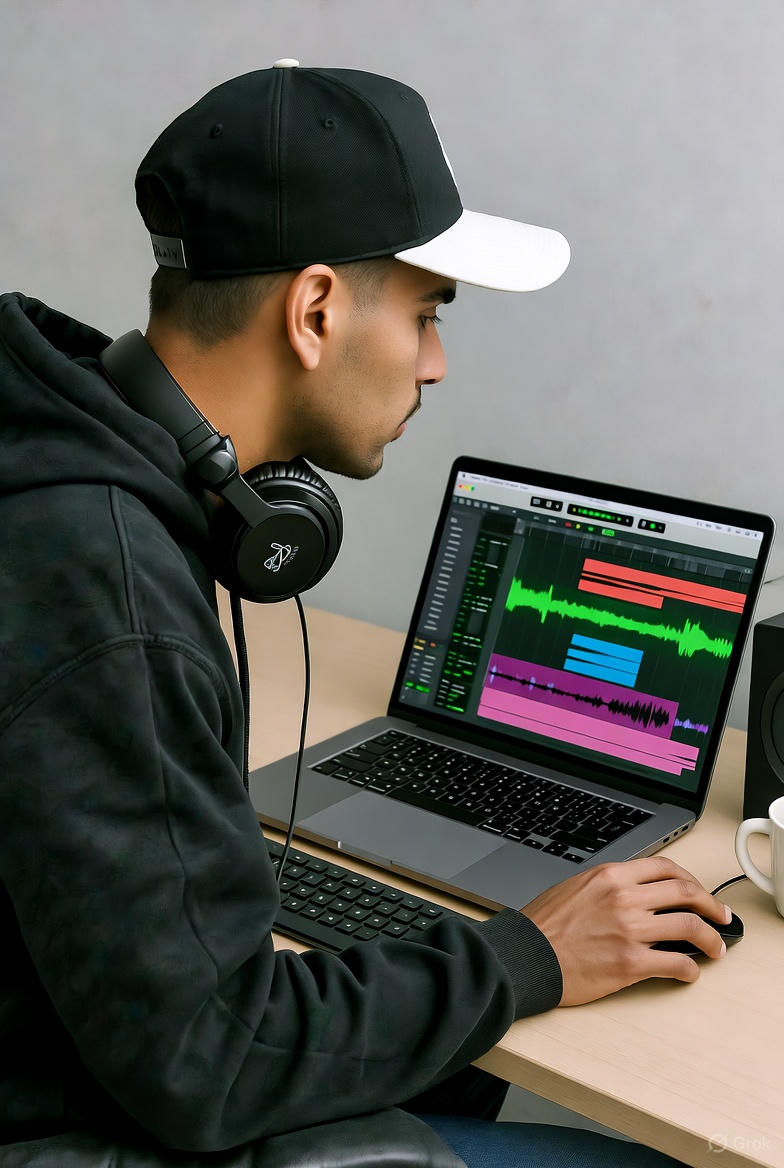!Let Us HELP YOU!
We have a lot of curated content on this blog.
Take this simple 20 second Quiz to Help You
Find The Exact Content You Are Looking For!
Mastering beats workflow sits at the heart of every hit record. Over 70% of professionally produced tracks rely on advanced mastering techniques to achieve commercial quality sound. Most people think mastering is just a technical step after mixing. Actually, this process shapes both the emotional impact and the loudness of your music so it stands out on any speaker, anywhere.
Table of Contents
- What Is Mastering Beats Workflow And Its Importance?
- The Role Of Mastering In Music Production
- Key Concepts In Mastering Beats For Music Quality
- How Mastering Beats Workflow Influences Final Sound
- Real-World Applications Of Mastering Beats Workflow
Quick Summary
| Takeaway | Explanation |
| Professional mastering is essential for quality | Mastering ensures music meets commercial standards, enhancing sound clarity and emotional impact. |
| Frequency balancing is crucial for sonic harmony | Properly managing low, mid, and high frequencies creates a cohesive listening experience. |
| Dynamic range optimization maintains musical expressiveness | Balancing volume variations prevents loss of intensity while ensuring commercial loudness. |
| Genre-specific strategies improve sound quality | Tailoring mastering techniques to different genres maximizes their distinct sonic characteristics. |
| Mastering connects creativity and technical precision | The process refines tracks while preserving the artist’s original vision, crucial for professional distribution. |
What is Mastering Beats Workflow and Its Importance?
Mastering beats workflow represents the strategic process of transforming raw musical compositions into polished, professional soundscapes. This critical phase bridges the gap between raw creativity and commercial quality audio production. Unlike basic mixing, a mastering beats workflow involves comprehensive sonic refinement that prepares music for professional distribution across multiple platforms.
Understanding the Core Components
A robust mastering beats workflow encompasses several fundamental elements that elevate musical productions. At its essence, the workflow involves detailed audio processing techniques designed to optimize sound quality, balance frequencies, and create a cohesive listening experience. Producers implement specific strategies to ensure their tracks sound consistent, powerful, and professional across different playback systems.
Below is a table summarizing key components of an effective mastering beats workflow and their specific functions in the production process.
| Component | Purpose/Function |
| Frequency Balancing | Adjusts low, mid, and high frequencies for harmony |
| Dynamic Range Control | Manages volume variations for sound clarity |
| Stereo Image Enhancement | Creates spatial depth and width |
| Bass Control | Manages sub bass and low-end energy clarity |
| Mid Range Clarity | Ensures instruments/vocals fit well in the spectrum |
| High End Definition | Adds sparkle/definition without harshness |
Key components of an effective mastering beats workflow include:
- Frequency Balancing: Adjusting low, mid, and high-end frequencies to create harmony
- Dynamic Range Control: Managing volume variations for optimal sound clarity
- Stereo Image Enhancement: Creating spatial depth and width in the musical composition
The Significance of Professional Mastering
Professional mastering transforms good music into great recordings. Discover more about the art of beat mastering and understand how this workflow can dramatically improve your musical output. Whether you are creating hip hop, electronic, or pop beats, a structured mastering workflow ensures your music sounds cohesive, powerful, and ready for professional distribution.
The importance of mastering beats workflow extends beyond technical refinement. It represents the final creative stage where producers can add subtle nuances, correct minor imperfections, and ultimately deliver a track that sounds exceptional on any sound system. By implementing a systematic approach, music producers can elevate their sound from amateur to professional grade, making their musical vision shine with crystal clarity and professional polish.
The Role of Mastering in Music Production
Mastering represents the final frontier of audio production where raw musical potential transforms into professional sound quality. This sophisticated process goes far beyond simple volume adjustments, serving as the critical bridge between creative composition and commercial readiness. Producers view mastering as the ultimate refinement stage that determines how listeners will experience their musical work across various playback systems.
Sonic Optimization and Quality Control
At its core, mastering serves multiple crucial functions in music production. Producers use this phase to achieve consistent sonic characteristics that make tracks sound cohesive and professional. Audio mastering acts as a quality control mechanism, ensuring each track meets industry standards for sound clarity, balance, and emotional impact. Learn more about advanced mastering techniques that can elevate your music production skills.
Key objectives of professional mastering include:
- Frequency Balance: Creating harmonious interaction between low, mid, and high-range sounds
- Stereo Image Enhancement: Developing spatial depth and width in musical arrangements
- Dynamic Range Optimization: Maintaining musical expressiveness while ensuring commercial loudness
Technical and Creative Transformation
Mastering bridges technical precision with creative expression. Producers use specialized tools and techniques to sculpt sound, addressing subtle imperfections while preserving the original artistic vision. This process involves careful equalization, compression, and stereo field adjustments that transform good recordings into exceptional musical experiences.
The role of mastering extends beyond technical correction. It represents the final artistic statement where producers can subtly enhance emotional impact, create sonic cohesion across entire albums, and prepare music for distribution across streaming platforms, radio, and physical media. By understanding and implementing professional mastering techniques, music producers can significantly elevate the perceived quality and professional standard of their musical creations.
Key Concepts in Mastering Beats for Music Quality
Mastering beats requires understanding complex sonic principles that transform raw musical recordings into professional soundscapes. This intricate process demands technical precision and creative intuition, blending scientific audio engineering with artistic expression. Producers who comprehend these fundamental concepts can elevate their musical productions from amateur recordings to industry standard tracks.
Frequency Spectrum Management
Frequency management represents the cornerstone of exceptional beat mastering. Explore advanced frequency balancing techniques to understand how professional producers create harmonious sound landscapes. Audio frequencies are divided into distinct ranges that require meticulous attention and strategic manipulation. Low end frequencies provide foundational weight, mid range frequencies deliver harmonic richness, and high end frequencies contribute clarity and definition.
WEBSITE RESOURCES FOR MUSICIANS
Critical frequency management strategies include:
- Bass Control: Managing sub bass and low end energy without muddying the overall mix
- Mid Range Clarity: Ensuring instruments and vocals sit perfectly in the sonic spectrum
- High End Definition: Adding sparkle and transparency without introducing harshness
Dynamic Range and Sonic Consistency
According to research published in Frontiers in Psychology, professional mastering involves sophisticated dynamic range control that preserves musical expressiveness while meeting commercial loudness standards. Dynamic range represents the difference between the softest and loudest moments in a musical composition. Skilled producers use compression, limiting, and gain staging techniques to create tracks that sound powerful and consistent across different playback systems.
The art of mastering transcends technical correction. It represents the final creative stage where producers can add subtle nuances, correct minor imperfections, and ultimately deliver music that sounds exceptional on any sound system. By understanding and implementing these key concepts, music producers transform good recordings into extraordinary musical experiences that resonate with listeners across diverse platforms.
How Mastering Beats Workflow Influences Final Sound
The mastering beats workflow represents a precise sonic transformation process that dramatically impacts the perceived quality and emotional resonance of musical productions. Each subtle adjustment during mastering can fundamentally alter how listeners experience a track, making this phase critically important in creating professional sound quality. Musical integrity is preserved while technical precision is introduced, ensuring that the original artistic vision remains intact throughout the refinement process.
Sonic Shaping and Emotional Impact
research published in Frontiers in Psychology that professional producers utilize to elevate their musical creations. The mastering workflow directly influences sonic characteristics by implementing strategic audio processing techniques that enhance emotional depth and clarity. Sophisticated tools manipulate frequency response, allowing producers to sculpt sound with microscopic precision that transforms good recordings into extraordinary musical experiences.
Key sonic transformation elements include:
- Stereo Field Expansion: Creating broader, more immersive soundscapes
- Harmonic Richness: Enhancing subtle tonal qualities and depth
- Dynamic Range Optimization: Balancing volume and emotional intensity
Technical Precision Meets Creative Expression
According to research from Berklee Online, monitoring environment and acoustic precision play crucial roles in mastering workflow effectiveness. Professional producers understand that final sound quality emerges from the delicate balance between technical intervention and creative intuition. The mastering process goes beyond simple volume adjustments, representing a nuanced art form where each decibel and frequency is carefully considered.
Ultimately, the mastering beats workflow acts as the final creative filter that determines how music will be perceived across diverse listening environments. By understanding and implementing these sophisticated techniques, producers can ensure their musical compositions translate powerfully and consistently whether heard through high end studio monitors, smartphone speakers, or live performance systems.

Real-World Applications of Mastering Beats Workflow
Real-world mastering beats workflow transcends theoretical concepts, representing a practical approach that transforms musical productions across multiple genres and professional environments. Professional producers leverage sophisticated techniques to ensure their tracks sound exceptional in diverse listening contexts, from streaming platforms to live performances. This workflow is not just a technical process but a strategic method of sonic enhancement that bridges creative vision with commercial viability.
Genre-Specific Mastering Strategies
Explore advanced mastering techniques for different musical styles and understand how producers adapt their workflow to specific genre requirements. Each musical genre demands unique mastering approaches that highlight its distinctive sonic characteristics.
The table below compares mastering strategies across popular music genres, organizing each by its unique mastering priority to help producers tailor their workflow accordingly.
| Genre | Mastering Focus |
| Hip Hop | Emphasize bass weight and percussive punch |
| Electronic | Create expansive stereo imaging |
| Pop | Maximize vocal clarity and brightness |
| EDM | Achieve precise frequency balance |
| All Genres | Ensure overall sonic cohesion |
Key genre-specific mastering considerations include:

- Hip Hop: Emphasizing bass weight and percussive punch
- Electronic Dance Music: Creating expansive stereo imaging
- Pop Music: Maximizing vocal clarity and overall brightness
Professional Production Environments
According to research from Joseph G. Schloss, professional beat makers understand that mastering workflow is more than technical manipulation it is an art form that requires deep musical understanding. Professional studios utilize advanced monitoring systems, specialized acoustic treatment, and precision tools to ensure tracks translate perfectly across different playback systems. Mastering engineers act as sonic translators, bridging the gap between raw musical creativity and polished commercial sound.
Ultimately, real-world mastering beats workflow represents a critical intersection of technical skill and artistic intuition. By understanding and implementing these sophisticated techniques, producers can create music that sounds professional, emotionally engaging, and sonically consistent across streaming platforms, radio, live performances, and personal listening devices.
Ready to Master Your Beat Workflow? Take the Next Step
Are you struggling to bridge that gap between creative beatmaking and commercial, professional sound? The article on mastering beats workflow points out a challenge every music producer faces: turning raw tracks into polished productions that stand out everywhere. If you have ever worried that your mixes feel unfinished or that your music loses quality across different platforms, you are not alone. Mastering techniques such as frequency balancing and dynamic range control can be overwhelming at first, especially when you want your work to compete with top producers in genres like hip hop, EDM, pop, and more.
Now is the moment to step up your production game. Visit How To Make Beats Blog for hands-on tutorials, real-world workflow tips, and in-depth guides on DAWs like Logic, Ableton, and FL Studio. Explore our easy mastering tips for Logic Pro and dive into the essentials of why you should master your beats. Take charge of your sound today. Transform your workflow and release tracks that truly shine.
Frequently Asked Questions
What is the importance of a mastering beats workflow?
Mastering beats workflow is crucial because it transforms raw musical compositions into polished, professional soundscapes, ensuring that music is ready for commercial distribution across various platforms.
What are the key components involved in mastering beats?
Key components include frequency balancing, dynamic range control, and stereo image enhancement, which collectively work to optimize sound quality and create a cohesive listening experience.
How does mastering impact the final sound of a track?
Mastering significantly influences the final sound by enhancing sonic characteristics, emotional impact, and overall clarity, ensuring that tracks sound consistent and professional across different playback systems.
What specific techniques are used in mastering for different music genres?
Different genres require unique mastering strategies; for example, hip hop emphasizes bass weight, electronic music focuses on precise frequency balance, and pop tracks maximize vocal clarity and loudness.
Recommended
- How to Make Money Making Beats in 2025
- Make Beats In Logic Pro
- How To Make Hard Beats
- Make Beats in Ableton



